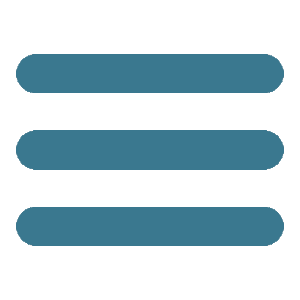davide conti
contemporary allegories
«Prometheus had a goal to pursue with his creatures: to seek revenge of the gods creating, with the humans, the counter-gods, and man did the same: with his artistic creatures he invented weapons against their mortal nature, figures of his imagination, the gods, the furious Achilles, Oedipus who blinds himself, Ulysses who draws the bow, Gulliver with the dwarfs and the giants, Lear in the rage of the elements, Woyzeck reflecting on the figures written in sponges. Man has produced a documentation of himself»*
Frederich Dürrenmatt
Each era tends to express itself favouring forms, which in the medium to long term, end up creating an identification element. In the bowels of this phenomenon nests a narrative act, a kind of primordial reflection which comes from the will to plastically remark the recognition of a aesthetic contrast. Imitation and abstraction (intended as moving away, not only representational, compared to the referent) condensing the previous cultural experiences, which are expressions and from which, that constant implicit transformation in the adjustment to the contemporaneity takes life. Through artistic expression society elaborates and defines those patterns that contribute to the creation and definition of a self, both individually and collectively, which cannot exclude from its genome a DNA metabolised in previous experiences. The work of art in this sense can therefore be understood, with Heideggher, even as a superhistorical greatness despite his historical definiteness.
The reflections that from this can be drawn develop in various directions. A first binary analysis sees as its focus the shape that folds back on itself, it appears to turn in search of its own origins. Faced with structured compositions in the crucible of the exposure room, it is impossible not to end up submerged by the gastroesophageal reflux of classical Western art. What strikes is the manic perfection of the mimetic gesture, with obvious Caravaggesque evocations emphasised by an illumination that sculpts the subject despite the photographic two-dimensionality.
A second line instead investigates the contents, far away from what tradition would put in relation with the form used. The viewer is thus faced with a kind of contradictory conflict between iconic terms and terms of content. On the one hand we have in fact a plastic support that evokes the classical, while on the other we find a narration that metaphorically speaks of its own contemporaneity. In all this is triggered, in the presence of the works, the transition from a latency state to an active one that influences the areas of perception, of thought and behaviour.
Before the images we find ourselves in the presence of an energy that comes to life from the power of the image in itself, as much as from the interactive reactions of the viewer in front of the compositions of bodies. This energy allows the transition of that narrative act which was mentioned at the beginning of a real iconic schematic act. However the exchange that occurs between body and image (iconic replacement act) certainly cannot escape a careful spectator through those references to the classical figurativeness and the implicit glorification of the form that exalts itself (iconic intrinsic act).
In other words, the process leading to the transition from the latency form to that active of the images unwinds, within the complex compositions, thanks to the symbolic language that uses postures, gestural art and lights that flood the viewer with certainties acquired centuries ago in the plastic sphere.
One should not, however, stop on the surface, confusing choices on formal terms with a mimetic will an end in itself. It is only an expedient with which the acceptance of the direct descent from the contemporary of the previous reality takes place.
It does not end here however. If on the one hand nourished by its past, the metaphorical composition narrates the present; on the other it cannot even exempt from becoming a metaphor of itself. The work, then, while rediscovering the strength of its origins is projected towards the viewer proactively. Its certainties are called into question, observing it in its bewilderment: the work acquires, as Lacan would say, the ability to look at man. In front of images in which the vestiges of the past and the stigma of the present merge for example in the models’ tattoos, the work is, yes, in the eye of the beholder, but at the same time even the viewer ends up inside the work in a short-circuit where you lose sight of who looks at who and what represents what.
The work therefore rises to the role of filter on the basis of which to sharpen the blades of a gaze made lethargic from inertia. The allegorical language, apparently classically dressed, adapts to the contemporary, it is renewed, and it acquires meanings that open the door to the possibility of new reflections. It is the eternal question about the condition of the human being; crushed inside by precise (and often rigid) socio-cultural structures. An inevitable question for the prudent viewer, who cannot but marvel in front of the contradictory details that emerge in spite of the model of prestige taken.
The physicality of the subjects, the evidence of imperfections in their bodies erased from our minds by decades of iconic installations inspired by an unintentional perfection, but also the story implied by precise individuals, finally give back a level of identification with the representation. Those who we look at, those who from the works look at us, but without directing their gaze, not just models who play a role in an allegory of archaic taste. They are a section of the reflection of a society over which we nourish a speculative interest that can be awakened, perhaps, only by an unexpected form.
[ Sandro Iovine ]
--------------------------------------------
(*) - Frederich Dürrenmatt, Prometeo, Comma 22, Bologna, 2012; pag. 38.

 home
cover ▼
opinions
news ▼
portfolio
post.it
post.cast
video
ongoing
thematicpaths
googlecards
FPtag
home
cover ▼
opinions
news ▼
portfolio
post.it
post.cast
video
ongoing
thematicpaths
googlecards
FPtag


 Davide conti - He was born in 1970 in Bologna, where he attended the Accademia di Belle Arti, graduating in 1993 in Painting. In 1991 he was awarded a scholarship to the Collegio Artistico Venturoli. At the same time as his artistic activities, he developed a passion for graphic design, dealing with editorial design for a well-known publishing house, and then making it his profession within large companies and important industrial groups.
Davide conti - He was born in 1970 in Bologna, where he attended the Accademia di Belle Arti, graduating in 1993 in Painting. In 1991 he was awarded a scholarship to the Collegio Artistico Venturoli. At the same time as his artistic activities, he developed a passion for graphic design, dealing with editorial design for a well-known publishing house, and then making it his profession within large companies and important industrial groups.